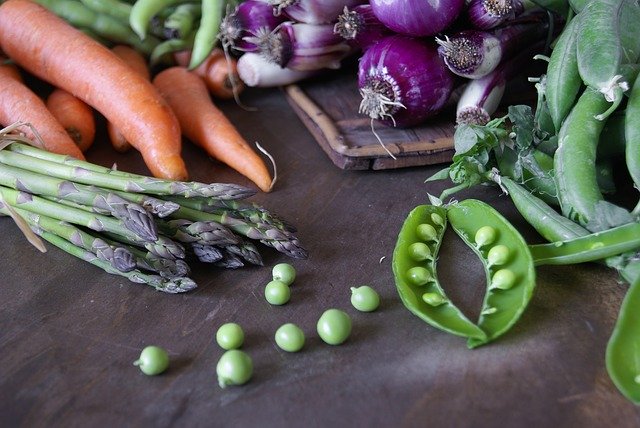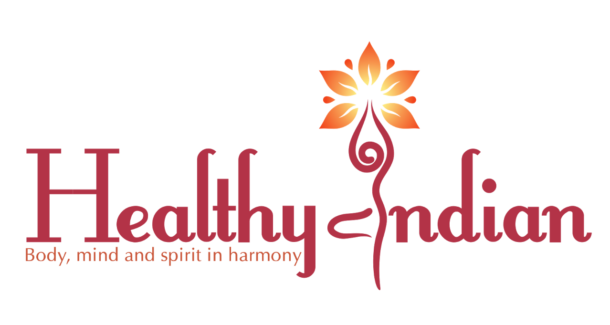Plant Neurotoxins
I usually start by telling people that plants have been around this earth a lot longer than any other living creatures that eat them. Their goal is to survive and to replicate their babies (seeds). Some plants want their babies to grow right under them and do so by creating amazing nutrient-dense fruit that surrounds those babies and fertilizes the ground once they fall. Others evolved to hope the wind or animals would carry their babies off away from them so they could grow by themselves.
Once bugs came on the scene, they started to eat all plants, especially the nutrient-dense fruit, and so the plants weren’t able to replicate as easily. They wanted to save their babies. So they created a neurotoxin that would kill or debilitate the bugs. This neurotoxin saved their babies from being eaten.
Lectins
Then bigger animals came along, like humans. The neurotoxins were too microscopic to do fatal damage to humans, but humans have millions of bugs inside their GI tract. Plants still wreak havoc on humans by destroying our colonies, which makes us sick. But, while these neurotoxins, called lectins, were discovered in the 1800s, the “death by a thousand cuts” it does to humans’ gut colonies has only just come to light.
So most general knowledge leads everyone to think the diseases they get are “hereditary.” At least for the past decade or so, they say it could have been caused by “leaky gut,” but don’t explain how one can get “leaky gut.” Leaky gut is just another term for a failed GI tract where lectins busted through the intestinal wall and caused all of the different problems humans are facing today.
But sometimes this story is too unfathomable for people to accept. So I then tell people that since I’ve stopped eating lectins, I’ve also stopped taking all allergy medications. Grass, oak, and all the environmental allergens I’ve been fighting most of my life don’t bother me anymore. This statement is usually a sharper hook for those who also suffer from allergies.
Allergies, Pains and More
I first learned about lectins from my parents back in the summer of 2018. My mom has an auto-immune disease called vitiligo, where the pigment of her skin disappears in spots. From her research, she learned that Dr. Steven Gundry was able to help cure, or at least alleviate, many auto-immune diseases, including vitiligo, by putting people on a lectin-free diet. Since Mom is the chef of their house, Dad also started on a lectin-free diet. While Mom’s vitiligo hasn’t yet cleared up completely, after a couple of months she no longer suffered from allergies, and her hip and knee stopped bothering her. Dad’s hands also became pain-free; he had been thinking he was headed down the rheumatoid arthritis path!
Ever since I came back from a Panchakarma cleanse in India in 2014 (a different story for a different time), I have been gluten-free. Being gluten-free made me feel better, but many gluten-free options include potato flour, rice flour, and pea protein. Read this blog on 6 Signs You May be Gluten Sensitive.
As you will learn about lectins, these foods have some of the highest concentrations! I was taking Zyrtec every day, two different kinds of homeopathic allergens for the “southern region of the US,” plus eye drops; and I was neti-potting at least once a week. Most nights, I would go to bed with a stuffed up nose, so I wasn’t getting restful sleep since I couldn’t breathe! And I wasn’t immune to physical pain, either. My knees were always sore, and I’d have to stretch them every night and try to pop them to release the pressure. Taking long walks after having a heavy dose of rice or potato would cause my knees to throb and my hip to seize up.
My Lectin-Free Journey
With the positive effects of the diet change for my parents, I was quick to sign on. I read Dr. Gundry’s book, The Plant Paradox*. I kept pictures on my phone of his “say ‘yes please’” and “just say ‘no’” list of foods to eat, as an easy reference for grocery shopping and dining out. My pantry and refrigerator got cleaned out and I became “all in.”
My husband, on the other hand, was much more skeptical. However, he is now about 95% all-in and does mostly regret when he decides to eat something with lectins in it. His effects and changes are his stories, and I’ll only be sharing my journey here. It is MUCH more comfortable to live a lectin-free lifestyle if the other people around you do, too.
A Lectin Free Lifestyle
If you’ve tried Paleo diets or Keto diets, many of the do’s and don’ts and the weight loss benefits are similar, but it’s important to remember that being lectin-free isn’t a diet, it’s a life choice. It’s a decision to select only foods that help you feel your best and choose not to eat foods that cause inflammation and mucus production.
When some people learn that they shouldn’t eat beans, nightshades, or grains, they feel immediately restricted. However, if they commit and remove these plants’ babies or nutrient-dense fruit from their diet, the awarded benefits are feeling clearer-headed, sleeping better, and not being a leaky mess during “oak season.” Many people who also have allergies to lectin-light foods (like garlic, cinnamon, onion, strawberries, blanched almonds, eggs, coconut, etc.) can begin to eat these foods again. Once their bodies have healed from the ever-present inflammation, their immune system isn’t on high alert and trying to fight all of the time.
Inflammation Free!
After about four months of living lectin-free, the inflammation in my hands disappeared. Now, my tell-tale sign that I’ve eaten something with sunflower seed oil or soy lecithin is that my pinky knuckles hurt! I don’t hesitate to tell the servers at sushi restaurants that I don’t want cucumber or sesame seeds hiding in my maki rolls. I don’t want to wake up to a sneezing fit and blowing my nose for hours the next morning! My husband and I usually keep our meals pretty simple by combining a protein, a starch, and a vegetable. We’ve also found many different fun recipes like Not Bad Pad Thai and Eggroll in a Bowl that satisfy our craving for a “chef-inspired” meal. Once you get the hang of what is an excellent food versus not, you can find many Keto and Paleo recipes* that are lectin-free!
A Short Do’s & Don’ts Guide
Becoming lectin-free is only a hard road if you decide it will be. It is a logical process of asking, “does this plant want me to eat its babies so its progeny can thrive elsewhere?” And, if you’re an omnivore, you also always need to ask, “did this animal potentially eat lectins?” If it wasn’t wild or grass-fed, then they probably did. And those lectins they ate are packed into the meat you’re eating! Oh, and be mindful about cheese – the A1 protein cows in the US wreak havoc on human systems (lactose intolerance) while the A2 protein cows from Europe are easily digestible.
Do’s:
Thinking about all of the lovely food you can have reduces the crazy feeling of never eating nachos again (which used to be one of my weekly staples). Other than the limits provided by the two basic questions, you can dine on:
- All organic, pasture-raised, wild-caught animals
- Organic sheep, goat, and A2 cow dairy products
- Cruciferous veggies, leaf veggies, root veggies
- Sweet potatoes (there are A LOT of different kinds)
- Pressure cooked white rice in small amounts (hooray sushi)
- Tree nuts
- Any fruit that was vine-ripened (so organic-only since non-organic is usually sprayed to fake ripen)
Don’ts:
- Gluten (sourdough bread is OK)
- Beans and Seeds
- Peanuts and cashews
- Rice (sushi is fine – rice in moderate quantity and not all the time)
- Peas
- White potatoes (sweet potatoes are great)
- Nightshades like tomatoes, eggplant, peppers, goji berries etc. (strawberries are OK)
- Vine veggies or vine fruits
Research & Read Up
If the digestive and respiratory ailments I’ve described sound familiar, or you have an autoimmune disorder, try looking into a lectin-free diet. First, read Dr. Gundry’s book and other materials you can find. Research is important! Then try a few of the suggestions from your research and monitor your reactions. Add more steps and suggestions as you successfully move through this diet change. Keep track of what works for you. I’m hoping this will improve your health and lifestyle, as it has mine.
Lectin-Free Recipes
*Healthy Indian believes that a well-rounded, nutrient-dense, organic diet is the best, some may benefit from going lectin-free. We have listed some recipes below that may help you start on your lectin-free journey:
- Dehydrated Apples
- Fresh Vegetarian Italian Basil Pesto
- Refreshing Watermelon-Mint-Ginger Smoothie (eliminate cayenne pepper)
- Mango Rasayana
- Easy Homemade Kefir
- Kaanji – A Fermented Drink (eliminate chili powder)
- Guacamole (eliminate tomato and jalapeno)
- Crunchy Baked Plantain Chips (skip the chili powder)
- Spiced Mulled Wine
- Make Your Own Probiotic Kombucha
- Spiced Purple Sweet Potato Cauliflower Bake (replace coriander/cumin/chili powder)
- Creamy, Sans Cream, Broccoli Asparagus Soup (eliminate chili powder and seeds)
- Pan Grilled Halloumi Cheese with Garlic (eliminate garlic, and choose your cheese with care)
About Patti Brownsord
 Patti is a nerd – a data nerd, research nerd, advertising nerd, and health nerd. The latter nerdiness has sent her down a path of continuous learning about her body, her health, and her energy production. And her nature makes her feel compelled to share her learning with the world. This is why she has her own blog. With her husband, she runs a podcast called Patti Is Still Learning and it can be found on most podcast apps. They live in Orlando, with their fur-baby, Eva, who is also living lectin-free. Check out Patti on Facebook and Instagram.
Patti is a nerd – a data nerd, research nerd, advertising nerd, and health nerd. The latter nerdiness has sent her down a path of continuous learning about her body, her health, and her energy production. And her nature makes her feel compelled to share her learning with the world. This is why she has her own blog. With her husband, she runs a podcast called Patti Is Still Learning and it can be found on most podcast apps. They live in Orlando, with their fur-baby, Eva, who is also living lectin-free. Check out Patti on Facebook and Instagram.
Do you love our posts and recipes? We’d LOVE to see your creations so click a photo and tag us on Instagram with the hashtag #healthyindian3 and please give a star (★) rating below. Follow us on Facebook, Twitter, Pinterest, Instagram, YouTube & Tumblr for healthy, easy and delicious recipes and lifestyle tips.
*There could be affiliate links in this blog. As an Amazon Associate we earn from qualifying purchases.
Please note lectins is a controversial area of research that continues to develop. As with any restrictive diet, please consult your doctor before eliminating food groups, as it is easy to miss out on important nutrients. Be sure to listen to your body, your energy levels, and how you feel to know if this type of eating is right for you!



Excellent information! I just discovered lectins after doing a bio-resonance scan and consultation. I’ve been gaining major interest in nutrition, fitness, yoga and Ayurveda for the last few years, blogging on chandguria.com and dealing with an auto-immune problem. Thank you! Subscribed!
Thanks for your comment, Chand. Glad you are finding your path to wellness. Nice blog – read a few of your posts. All the very best!